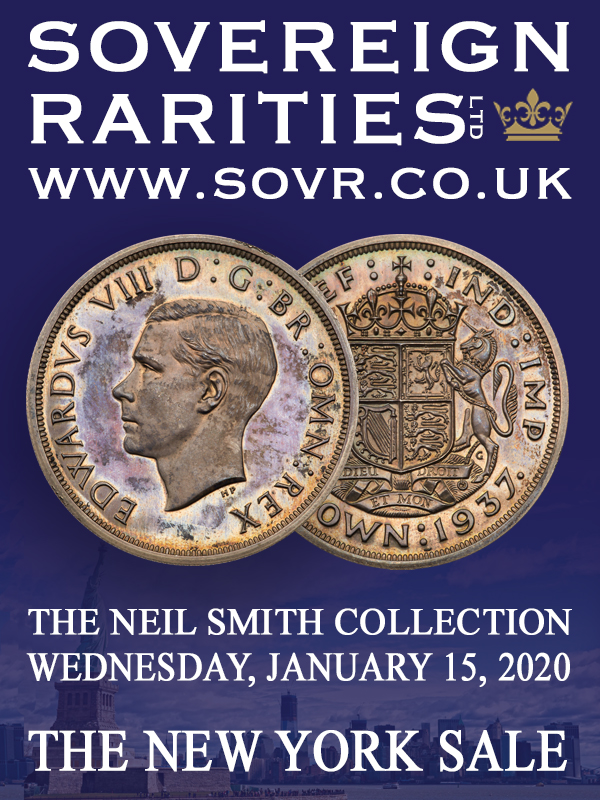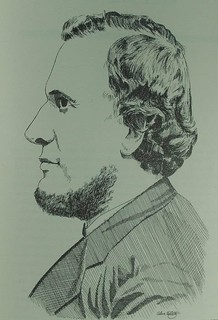
PREV ARTICLE
NEXT ARTICLE
FULL ISSUE
PREV FULL ISSUE
EMMANUEL JOSEPH ATTINELLI JR., (1832-1895)John Lupia submitted the following information from the online draft of his book of numismatic biographies for this week's installment of his series.
Thanks! As always, this is an excerpt with the full article and bibliography available online. This week's subject is Emmanuel Joseph Attinelli, Jr. -Editor
He was born on April 16, 1832, in New York City, New York, the son of an immigrant Italian nobleman Dot. Emanuel Giuseppe Attinelli, Sr. (January 5, 1803- June 24, 1854), and his mother an American blueblood and native of the state of New Hampshire, Mehitable Kent (November 1, 1796 –July 16,1849). His father, Signor Dottore Emanuel Giuseppe Attinelli, was an illustrious Italian noble who served at the court of King Ferdinand I at Palermo, Sicily. He was forced into political exile in 1821 and came to reside first at Boston and then to 27 Stone Street, New York, working as an exchange or money broker at 8 Broad Street. Between 1840-1848/9 young Attinelli Junior was probably educated abroad as the majority of aristocrats had been, typically at Paris, France. So far no documentation has surfaced to corroborate this, but it is consistent with what we would expect to find to be the case. By April 1849 Attinelli, Sr., was appointed the Consul in New York by the government of the Kingdom of the Two Sicilies (Regno delle Due Sicilie), the arrival back to America might also help to better explain this sequence. Evidently, the Attinelli's were a distinguished family of the Italian nobility who were highly cultivated and financially and politically connected and were well suited as part of the Italian Consulate in New York City, New York and Palermo, Italy, which must have afforded them many opportunities to travel especially between these two countries over the years. Mehitable Kent Attinelli, the mother of our character, died three months later of the epidemic in New York in July 1849. Her death notice appeared in Spectator, Thursday, July 19, 1849. Her tragic and untimely death appears to have effected the teenager lifelong inspiring him to study microscopy and perhaps inspiring him to enter into the medical profession to fight disease. We can also see how his father's dealings with currency exchange also influenced his lifelong pursuit in numismatics with interest in American and foreign specie. His father continued to work in New York City as an exchange broker, interpreter, translator and Consul to Palermo, Sicily and established many diplomatic relations among the consuls of other governments. Young Attinelli seems to have been involved in studying coins from his youth and like most educated men learned about ancient Greek and Roman coins through his studies of the classical languages. He also was aware of the changes in American coinage as it affected what circulated as specie. After the "gold rush" of 1849 a new craze for gold filled the American atmosphere. After his schooling he traveled and his freedom as an independent bachelor granted the leeway to explore and develop in the same vein as his parents granted him leeway to grow and develop from his youth. At some date, perhaps, prior to his father's death young Attinelli travelled to San Andreas, Calaveras County, California, on some unknown account, and suffered the loss of $500 during the fire there in June 1858. It is not clear why young Attinelli went there, if it was concerning gold prospecting, or involving family, friends, or relatives immigrating there from Italy. Two years later he married Lydia Beekman Moulton (d. 1900), the only daughter of Hon. Severn D. Moulton (1806-1878), Tax Commissioner of New York City, on his twenty-eighth birthday, Monday, April 16, 1860 at New York City. The fact that Attinelli married the daughter from an upper class and illustrious family confirms his own financial status as well-to-do, culturally and intellectually developed and a perfect fit to schmooze with affluent and upper crusts of society, like himself. They were married by the Rev. Charles M. Jamison. He and his wife were living in both Boston and New York City as many well to do people had done similarly, apparently with residences established by his father on his arrival to America. From 1867-1870 he was appointed to the Board of Aldermen City of Boston, during the administration of Mayor Nathaniel Shurtleff. Married Attinelli still retained the dignity and status of the Consulate in New York since his wife was formally invited to the French Consulate, as published in Courier des Etats-Unis, Sunday, October 5, 1879. This comes as no surprise since he intimates a deep personal friendship and knowledge of Louis Borg, the French Consul in New York when he discusses his auction of medals at Henry H. Leeds & Miner, New York on November 12,1867 and the keen knowledge they had been offered on April 17, 1856 but were withdrawn as he astutely and meticulously recorded these facts in Numisgraphics. On November 21,1863, he sold his collection of 148 lots of foreign coins, United States coins, medals and tokens and Colonial coins through Henry H. Leeds & Co., New York. He added another 4 lots of United States to another Henry H. Leeds & Co., coin auction held four days later on November 25, 1863. And yet another of 117 lots of foreign and United States coins and medals sold by H. H. Leeds & Co., NY on December 24, 1863. He sold his collection of 384 lots through Bangs, Merwin & Co., NY on December 21, 1864, postponed since December 16. He also sold coins to Charles Wild. In March 1869 he purchased Lord Baltimore coinage paying $21 for several pieces. It is popularly published that Dr. Emmanuel Joseph Attinelli (1832-1895), undertook the task of enumerating every known American coin auction sale to the end of 1875 in his publication of Numisgraphics, or A List of Catalogues, in which Occur Coins or Medals, which have been Sold by Auction in the United States . . . (New York, 1876) [Clain-Stefanelli 11863, Sigler 141] . What is not popularly known is that technically, Numisgraphics is a co-authored work by Attinelli and Parish in light of the fact that Daniel Parish, Jr. provided the bulk of the entries from pages 5-44. The title page reads “Compiled by E. J. Attinelli” with no reference to Parish or mention of being assisted by him or the fact that more than half the auction catalogues listed in his work are based on Parish’s work previously published a decade earlier in a series of three articles in The American Journal of Numismatics. Certainly, Attinelli was not a plagiarist since there is evidence to support the notion that Parish wished to remain anonymous since Attinelli in the Preface references an anonymous person and Parish is the only person living at that time and within the circle of Attinelli's friends who fits the bill. Regardless, he published the book on the occasion of the 1776-1876 Centennial celebrated throughout the United States. The book is an anthology of over 400 listings of coin auction catalogs printed in the United States presented chronologically from 1828 to 1875, with brief notations about the consignor, number of lots, days of the auctions, prices realized, and occasionally personal notes and observations, followed by an index to owners and coin dealers. An appendix contains bibliographic information on books, periodicals, fixed price lists, and institutional collections. Attinelli worked to create a comprehensive and exhaustive list of coin auction sales catalogs and numismatic literature but we know he missed many coin auction catalogs and other numismatic literature as well. He availed himself to reading the ANS organ the American Journal of Numismatics which contained a list published ten years before his own by Daniel Parish, Jr, but did not include four of them. Nevertheless, if he had not published Numisgraphics he would only have been an insignificant footnote in the annals of American numismatic history. Though imperfect and far from complete Attinelli's work still remains a vitally important and basic work that should be in every American numismatists library as an essential reference tool. To read the complete article, see:
 Wayne Homren, Editor The Numismatic Bibliomania Society is a non-profit organization promoting numismatic literature. See our web site at coinbooks.org. To submit items for publication in The E-Sylum, write to the Editor at this address: whomren@gmail.com To subscribe go to: https://my.binhost.com/lists/listinfo/esylum All Rights Reserved. NBS Home Page Contact the NBS webmaster 
|
